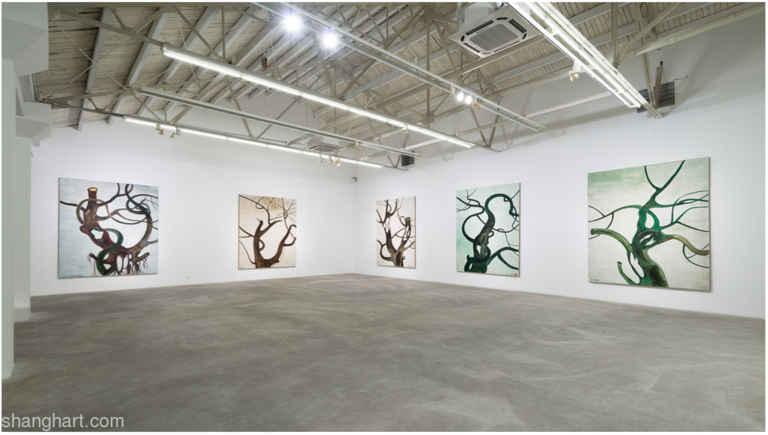By Carolyn Hoemann*

The Zhang Enli solo exhibition. Source: ShanghART Gallery.
The last hundred years of isolation and political turmoil in China have denied its artists participation in the international art community. As such, China is often only referenced by its increasing economic and political power despite remarkable innovations in contemporary Chinese art. Although many artists were forced underground or killed during the Cultural Revolution, China’s artists are flourishing with increased access to global communication and information.
I am fortunate to live in something of an artistic epicenter; Shanghai has maintained its place in history as the “Paris of the East” and is home to dozens of world-renowned galleries and artists. Among them, Zhang Enli’s newest collection was shown at the prominent ShangART gallery in Shanghai’s M50 art district. Zhang Enli is a significant figure in China’s art scene whose most recent work explores the use of traditional themes and styles in a contemporary context.
The new collection is crowned with a series of paintings that feature the trunk of a tree, harkening back to ancient motifs of nature in Chinese art. Although created with the same technique, each painting exudes a different and complex mood created by the trunk’s color and shape. Zhang’s use of “unnatural” colors like fuchsia, lime green and turquoise generates an aesthetic that is plainly unlike real trees, far different from the more realistic images in Chinese art history. The wide range of colors also foster emotional depth in the works by insinuating that the tree is multifaceted in ways that are not explored in the nature scenes of the Chinese tradition. Where traditional art praises serenity in nature, Zhang exults in intensity.
Zhang paints close-up, truncated sections of the tree to study a specific area. Between the use of a constricted scope, vast canvasses, and the diversity of mood among the paintings the series seems to magnify the individuality of nature. This exploration of nature’s uniqueness also differs from the interpretations of nature in the Chinese tradition of art. Scenes of the natural world have endured as a constant source of content and inspiration for Chinese visual artists, poets and philosophers. However, nature is typically illustrated more completely; paintings often brim with mountainous landscapes, rivers and lush flora. In this way, Zhang is contemporizing the motif of nature and making it relevant to the changes in Chinese culture. As China modernizes, and in some ways Westernizes, many young people are searching for a sense of individuality.
Aptly explained by a friend of mine: “In China, if you are unique as one in a million, there are still almost a thousand people just like you”. His paintings use the historically resonant content of nature to demonstrate the beauty of uniqueness – a radical message in Chinese art and culture. In a country where artists were often forced to produce propaganda or die only a few decades ago, Zhang Enli and other contemporary artists of all mediums are creating more than just artwork. They are building a space for people to explore who they are.
Carolyn Hoemann is a University of Iowa sophomore studying ethics and public policy with a certificate in fundraising and philanthropy communication. She will be spending this academic year abroad in Shanghai, China, on the USAC Yearlong Program in China.